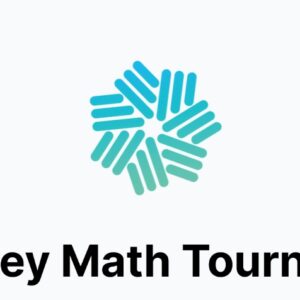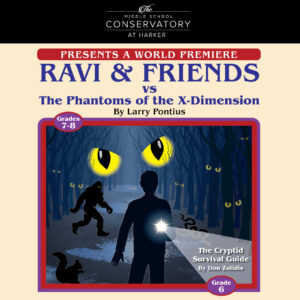This article originally appeared in the summer 2010 Harker Quarterly.
Nichols Hall on the Saratoga campus hummed with energy on April 10, as Harker’s fifth annual research symposium, “Technology for Life,” got underway. Begun in 2005 by upper school biology teacher and science department chair Anita Chetty, the student-led event is modeled after professional symposia which encourage the sharing of ideas in a noncompetitive setting.
More than 300 people and 69 student presenters attended the increasingly popular event. “Each year sets a new standard and because of the nature of our community, we simply use that standard to grow from,” said Chetty. Three alumni also presented their current university research, and two keynote speakers linked science backgrounds to careers.
The day included breakout sessions led by 19 upper school students and poster presentations by another 16 students. Anjali Menon, Gr. 12, formally presented her work with IBM’s Almaden facility, on using computers to replace human subjects in simulating the action of drug molecules. Her mother, Indira Somanathan, is enthusiastic about Harker’s research program. “Here you have your own facilities and technology. I’m really happy with Nichols Hall,” she said.
Amy Zhou, sponsor coordinator for the symposium and mother of Jason Young, Gr. 11, thinks Nichols Hall plays a big part in the excitement middle school students have for science. “The level of science is getting better and better every year,” she said. “The teachers are encouraging and give you time to work in the lab, and the research class allows you to learn more skills like writing and presentation.” Young presented his work with epigenetic regulation of gene expression, which he will continue at the University of California, San Diego, this summer.
The upper school Chemistry Club presented demonstrations, and at a “Harker Hospital” workshop, middle school students, under the guidance of upper school students, ran EKGs, took blood pressure readings and analyzed simulated blood samples. “This was a great opportunity for us not only to showcase some of our sophisticated data acquisition tools, but for our upper school students to mentor and inspire younger Harker students,” said Chetty.
Divya Kalidindi and Namita Ravi, both Gr. 8, were two of 34 middle school students on hand to discuss their poster presentations. Studying the effect of caffeine on the regeneration of body parts in planaria, they found that caffeine could halve the time required for planaria to grow a new head. Looking forward to working
in Nichols Hall next year, Kalidindi said, “The center seems more professional. It is going to be really fun.” Ravi added, “The topics are really good here.”
Inspired by his study of respiration to research the effect of phosphate on algae blooms in aquatic ecosystems, Josh Batra, Gr. 8, said, “It was fun to see my experiment in action.” Batra is looking forward to more exposure to biology and physics in the upper school.
Event sponsors offered hands-on technology demonstrations and career advice for students and parents. Brendon Yu, Gr. 8, stood in line to try out Autosuture, by Covidien Surgical. Taking a turn at the hand instruments for suturing, Yu said, “This helps you get inside the body and sew delicate arteries. It requires a lot of practice.”
The day closed with a workshop titled “Research Internships, Technical Writing and Research Competitions,” led by a panel of seniors. “These articulate and talented students gave such an informative talk that parents wanted to hear it again,” Chetty said.
“The prospect of approaching a university researcher can be daunting. Seeing that their Harker peers have been successful in doing so is highly encouraging,” said Chetty. “Presentations such as this one continue to assist in moving forward the mandate of the symposium, which is that it is a student-led research conference for students.”
Keynote Speakers Inspire with Advice, Careers
The 2010 “Technology for Life” research symposium featured two prominent keynote speakers who have broadened their scientific backgrounds into careers with global impact.
Dr. William McClure, a partner at Napa Valley Plastic Surgery, Inc. and a graduate of U.C. San Diego’s medical school and Stanford University, focused on his volunteer work with Interplast, doing reconstructive surgery on children in developing countries.
During 25 years and 55 missions in 14 countries, McClure has repaired cleft lips and palates, burn scars and other issues. McClure said, “I had no idea what I wanted to do when I was in high school,” until a teacher with a burn scar stirred “my first interest in plastic surgery.” During residency, he had the chance to take care of children in Mexico. “Something clicked. That changed my life,” said McClure.
Dr. Christopher Gilbert is the vice president of science and technology at Keystone Dental, Inc. and is a graduate of U.C. Berkeley and Carnegie Mellon in materials science.
Gilbert said his father’s interest in bad science fiction, where fantastical microsurgical tools and bionic eyes were part of the stories, inspired him. Some of those medical devices such as surgical robots and ocular implants are now a reality. Gilbert said, “Medical technology has revolutionized health care since the 1960s. Discoveries improve lives; they change lives.”
Noting the interdisciplinary nature of the field, Gilbert advised, “Many of the skills you are now developing in science will serve you in the future. Many of the problem-solving skills I developed in the sciences have served me well in the business world.”
For the full report on keynote speakers at the Harker Research Symposium, go to news.harker.org and search on “Research.”
Alumni Impress Symposium Attendees with Current Research
Three Harker alumni were featured speakers at this year’s research symposium, “Technology for Life.” Jennifer Ong ’07, a junior at U.C. San Diego, is pursuing biology and communications majors. Richard Kwant ’07 is studying chemistry and physics at Harvard University, and Brian Ma ’08 is a bioengineering major at the California Institute of Technology.
Ong spoke about her new role as chief operations officer for The Triple Helix (TTH), a nonprofit, student- run organization that publishes undergraduate articles in print and on their website. Founded by Kevin Hwang ’03, its mission, said Ong, “is to allow students the opportunity to voice ideas about the interdisciplinary nature of science, society and law.”
Speaking via teleconference from Harvard, Kwant presented his work on protein structures and interactions. He was able to create crystalline structures of the protein human carbonic anhydrase II, which provide researchers with an atomic level view of what is happening in the protein. “This research will be helpful for biology and medicine in understanding how proteins work and how human biology works,” Kwant said.
Begun as a summer research project at CalTech, Ma’s work seeks to unravel the mystery of how plants, unlike animals, can regenerate. Ma screened epigenetic-related genes to determine if they are involved in the regeneration process.
“Being the first to discover new knowledge is definitely one allure of going into the research field, whether as an undergraduate or afterwards,” said Ma.
For the full report on alumni speakers at the Harker Research Symposium, go to news.harker.org and search on “Research Alumni.”






